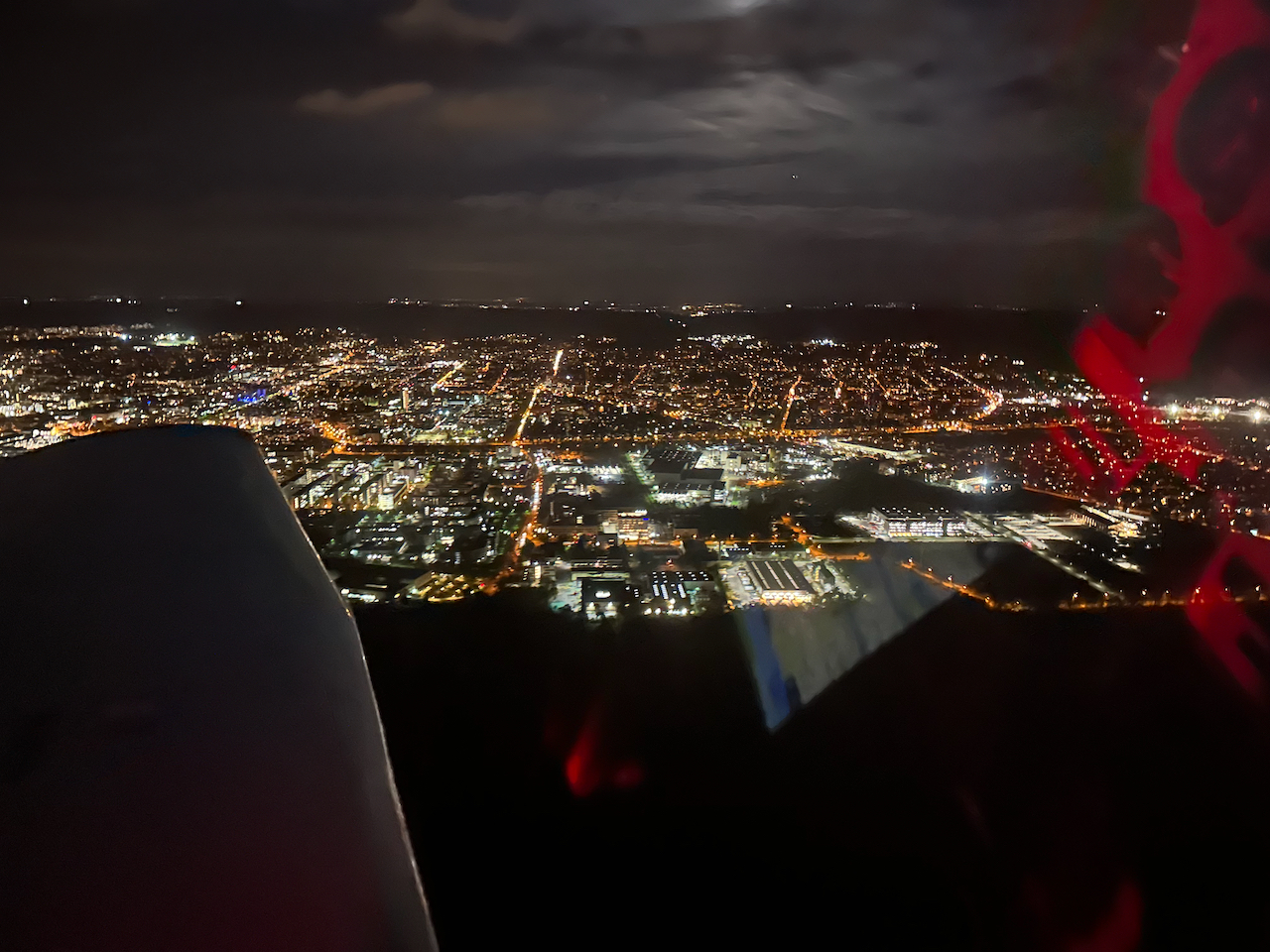
Night VFR in Germany
Flying VFR at night is very different and offers some stunning views. I’ve written down everything you need to know when flying VFR at night in Germany.
Disclaimer: This article will describe the current situation in Germany. It may be the same as other SERA countries. I will not go into flying at night in general, as this is worth a whole article in itself.
Definition
First of all, we need to know what actually is night? Night is the time between the end of civil evening twilight (ECET) and the beginning of civil morning twilight (BCMT). These are defined as the moment when the center of the sun is 6 degrees below the horizon. Of course this is not something you can calculate easily, so there are tables by the German MET Office (DWD) for a bunch of cities, which you can find here.
License
In order to be allowed to fly at night, your license must include a “Night” remark. In Germany you can get this entry into your license after passing a theory course, 5 hours night flight training, including a one hour cross country flight and five solo take-offs and full stop landings. There is no exam. In case you have a LAPL, you will need to also have some basic IFR training, as is part in the PPL curriculum.
Currency
Since flying at night is different to flying during the day, you should make sure you feel current before attempting a flight. If unsure, fly with an instructor. Taking passengers a night requires the usual 3 take-offs and landings during the last 90 days, as well as one landing at night. If you hold an IFR rating, the landing at night is not required.
Plane
Your airplane also needs to fulfill some requirements:
- navlights (need to be switched on between sunset and sunrise)
- anti-collision lights
- landing light
- turn indicator
- attitude indicator
- heading indicator
- vertical speed indicator
- means of indicating when the supply of power to the gyroscopic instruments is not adequate
Aerodrome
In Germany many aerodromes are closed at night. Some offer the option for a PPR. Always ask for the fees involved, since they can be quite high.
Some airports will accept VFR traffic all night.
In my area the options are unfortunate minimal, but in northern parts of the country you have some destinations.
Weather
When flying cross-country, the minima are greater than during the day. The ceiling must not be below 1,500 ft and you must always have the ground in sight when operating below 3,000 ft MSL or 1,000 ft AGL, whichever is higher.
Altitudes
The minimum altitudes at night are also higher:
- In high our mountainous areas, you must be at least 2,000 ft above the highest obstacle within an 8 km radius.
- In other cases you must at least be 1,000 ft above the highest obstacle within an 8 km radius.
These rules will differ between different SERA member states.
Flight Plan
For flights leaving the vicinity of the departure aerodrome, you need to file a flight plan. You can do so through your EFB (Foreflight, Skydemon, etc.) or via the AIS portal of DFS. No special remarks are required to indicate a night flight.
ED-R 150 & LANTA
At night, there some restricted areas (ED-R), which may become active.
ED-R 150 is network of restricted areas for military low flying activities at night. It starts at 500 AGL and the upper limit varies (see MilAIP). They are usually easy to overfly. It may become active Mondays through Thursdays between sunset + 30 Minutes (based on Kassel) until midnight. You can get information about its activation via the WebAUP or on frequency.
Another set of restricted areas are the LANTAs (Low Altitude Night Training Area). The activation times are the same as the ED-R 150. They usually reach from 2500/3500 AGL up to FL100. You can also use the WebAUP to figure out if a certain LANTA is active.
When flying cross-country at night, you must always consider these restricted areas.
Clearances and Radio communication
For cross-country flying at night you don’t require any special clearances. The rules are the same as during the day.
You will however need to be in contact with the Flight Information Service (FIS), or if the service is closed, you must contact the appropriate radar control.